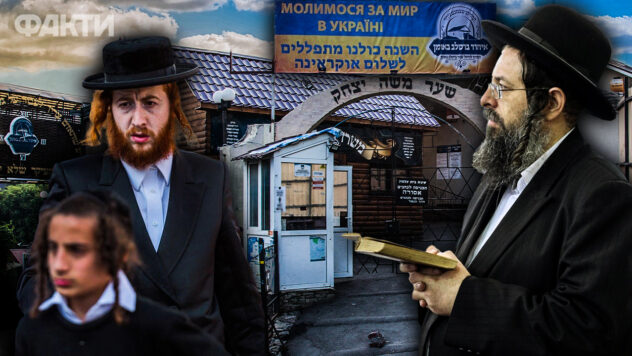
Every year, thousands of Hasidim come to Uman (Cherkasy region) to celebrate Rosh Hashanah — the Jewish New Year. This year, it will be celebrated from October 2-4.
ICTV Facts decided to find out in more detail who the Hasidim are, how the traditions of Hasidism are connected with Ukraine, and why pilgrims travel to Uman every year even during a full-scale war.
Senior researcher of the Department of Jewish Studies of the Vernadsky National Library of Ukraine, President of the Ukrainian Association of Jewish Studies Vitalii Chernoivanenko answered these and other questions.
Now watching
What is Hasidism and who are the Hasidim
Hasidism is one of the directions of Judaism, which arose in the 18th century as a new alternative of that time.
— In general, the Jewish religion is very colorful and diverse. It has various directions. Hasidism is one of the directions of Judaism, which appeared in the 18th century. Hasidism first appeared on Ukrainian lands as part of the Polish-Lithuanian Commonwealth. Therefore, Hasidism is directly connected with Ukraine, he noted.
A Hasid (translated from Hebrew as “devout, pious, supporter, follower”) is a person who is deeply immersed in Kabbalah, the spiritual mystical and philosophical teachings of Judaism.
One of the key principles of Hasidism is the connection with spiritual leaders (tzaddik or rebbe), who are considered intermediaries between believers and God.
— But then Hasidism expanded, and the students of the founder of Hasidism, Israel ben Eliezer (aka Besht), founded various trends within the Hasidic movement itself. They are geographically very widely represented and are not limited to Ukrainian lands. But Hasidism is also developing very actively in Ukrainian lands, if we talk further, for example, about the 19th century, in particular about Bratslav Hasidism, the founder of which was Rabbi Nachman, explained Vitaly Chernoivanenko.
Why do Hasidim celebrate Rosh Hashanah in Uman
One of the spiritual leaders, namely Tzadik Rabbi Nachman of Bratslav, who is considered the founder of Bratslav Hasidism, is buried in Uman.
Tzadik Nachman is the great-grandson of the founder of Hasidism, Besht. He was born in Medzhybizh (now — Khmelnytsky region).
— Rabbi Nachman was indeed born in Medzhybizh, where he spent his childhood. But then, as a rabbi, as a spiritual teacher, he traveled in a certain way. In general, Hasidic teachers establish courtyards with their followers and believers, becoming tzaddikim (literally — righteous), that is, spiritual leaders for certain directions. Rabbi Nachman spent several years in several courtyards, in particular in Bratslav.
If you look more broadly at how various Hasidic teachers are called in literature, for example, Rabbi Nachman of Gorodenka, Rabbi Levi Yitzchak of Berdichev, Rabbi Dov-Ber of Mezhirich, Rabbi Nachman of Bratslav, that is, from somewhere. Where some kind of fame was most firmly established for this or that spiritual teacher, where he was a prominent figure. The place most firmly established for Rabbi Nachman was Bratslav, — noted Vitaly Chernoivanenko.
Rabbi Nachman settled in Uman shortly before his death. He wanted to honor the memory of the tragic event of the Koliyivshchyna era, known as the Uman tragedy, which occurred in 1768.
Then thousands of Jews who lived in Uman refused to change their faith and accepted a terrible death.
— Different people go to Uman today, mostly religious, but of different directions. Bratslav Hasidism — is their history. That is, this history initially does not concern all Hasidism. Why did it happen this way with these Hasidim? This tradition is because the founder of their movement, Rabbi Nachman, spent the last years of his life in Uman. He died there. His grave is still here. In general, in Hasidism, the tradition of pilgrimage to the burial places of its founders and teachers — is a common phenomenon, — he said.
Rabbi Nachman bequeathed to his students to come to his grave after his death and pray. And the best time to do this is on Rosh Hashanah. He died on October 16, 1810.
— During the Uman tragedy, many local Jews died. When Rabbi Nachman arrived in Uman, he was taken to the graves where the Jews who died during the Koliivshchyna are buried. He was very touched and said that he was destined to be buried here, thereby calming the souls of the innocently murdered Jews. That is, his soul helps their souls find peace. And this is a rather mystical thought.
The President of the Ukrainian Association of Jewish Studies explained why Rabbi Nachman bequeathed to come to his grave during Rosh Hashanah.
— Rosh Hashanah — is the New Year in Judaism, a time of renewal. That is, life is presented by the Hasidim as a certain cycle. This is a process that requires constant renewal and work on oneself. Rosh Hashanah seemed to be the best time for this, because in different cultures there are such ideas that the New Year should bring some renewal in a person's life, — shared Vitaly Chernoivanenko.
Why do Hasidim go to Uman despite the risks of war
— I would answer quite briefly, but I would start with a philosophical statement. We must understand in general what pilgrimage is, who a pilgrim is. This is a religious person with a certain faith, ideas and convictions. If they are strong and firm enough, then it is difficult to find any obstacles for faith. Neither the current conditions of a full-scale invasion, nor the pandemic, which was also a certain challenge, stopped the Hasidim from coming to Uman, — he noted.
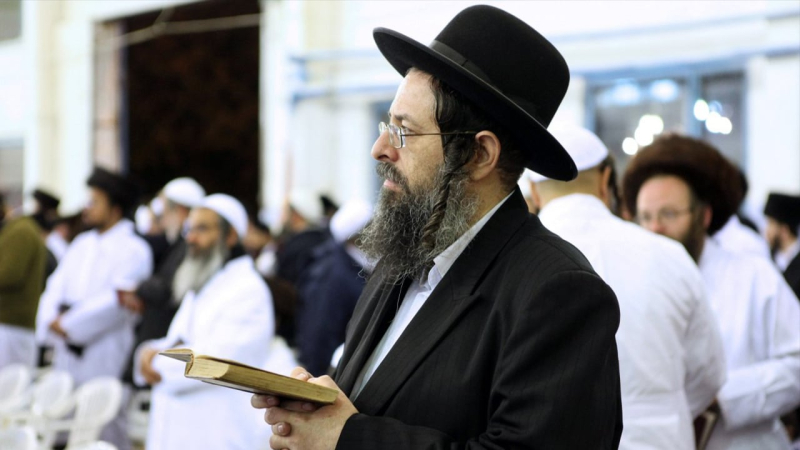
Photo: UNIAN
Since Rabbi Nachman of Bratslav bequeathed to his followers to come to his burial place, the Hasidim began to arrive at the grave already on the first anniversary of his death — in 1811.
— They came later, until the end of the Russian Empire, and for some time after that. And they tried to come during the Soviet Union. There were some such cases, of course, but not mass ones. There simply weren't that many followers. The Soviet Union itself was already an obstacle, and not everything depended on the Hasidim. Let's imagine a citizen of the State of Israel in Soviet times coming to a totalitarian country for the purpose of religious pilgrimage? That would be completely fantastic, — he believes.
If we talk about the modern phenomenon of pilgrimage in independent Ukraine, then mainly followers of the Bratslav Hasidism come to Uman, although not only them.
— As is known, a true Muslim must make a pilgrimage to Mecca at least once in his life. Also, for a follower of the teachings of Rabbi Nachman, a pilgrimage to Uman is obligatory. But representatives of other Jewish movements, not Hasidic, also go, sometimes even non-religious people, for whom this is an opportunity, as we would say now, to hang out.
For example, once they went to India for the purpose of spiritual searches. For some, Uman is also a place where they search for spiritual truths, and someone goes simply as if on vacation: to have fun, have a drink, sing, dance. This is if we are talking about the real picture, — said Vitaly Chernoivanenko.
What difficulties can Hasidim face
The Ministry of Foreign Affairs this year, as in previous years, since 2022, since the beginning of a full-scale invasion, has been warning the State of Israel and pilgrims that it cannot guarantee 100 percent security due to the possibility of rocket and drone attacks.
— The year 2024, one might say, is no longer unique. This is no longer 2022 or 2023, but the third year of a full-scale war. The same difficulties could have already arisen last year and the year before, if we are talking about the war factor, — he noted.
Before that, there was a pandemic, during which certain restrictions were in effect. Sometimes it got to the point that the Hasidim stood at the border and waited for permission to enter, hoping until the very end that they would be allowed to come, at least some of them, recalled Vitaly Chernoivanenko.
We are also talking about the logistical issue, since there is currently no direct air service between Israel and Ukraine.
— By the way, they come not only from Israel, but also from European countries, such as France. Pilgrims also come from America. Previously, you could fly to Kyiv or Odessa and get there from there, as we know, Uman is located approximately halfway between these cities. Now you need to fly to Poland, Slovakia, Hungary, other countries that border Ukraine, and get there by land from there. As far as I know, they mostly go through Poland, — he added.
At the same time, the question of internal risks and possible misunderstandings with the local population always arises, so Ukrainian law enforcement agencies intensively patrol Uman during Rosh Hashanah.
— But it is not the first year that representatives of the Israeli police have also arrived to help Ukrainian law enforcement officers maintain law and order. This year is no exception, — noted Vitaliy Chernoivanenko.
How Ukraine Can Promote Awareness of Hasidic Traditions
— We do not have any confrontation or significant misunderstandings. We know that the Ukrainian population as a whole is not anti-Semitic. Among Jews, too, the prejudices against Ukrainians that previous generations had are becoming a thing of the past. After all, Ukrainian-Jewish relations are improving. The dialogue between peoples and religions continues, — said the president of the Ukrainian Association of Jewish Studies.
According to him, education, erudition and, accordingly, enlightenment — are the best way to learn more about each other.
— For example, in Ukraine there is the Ukrainian Association of Jewish Studies. There are educational programs, in particular the Master's program in Jewish Studies at the Kyiv-Mohyla Academy, the program of Jewish studies at the Ukrainian Catholic University in Lviv. There are those who tell Ukrainians about Jews, Jewish culture and religion, even train specialists in this field.
In his opinion, Ukraine as a state could and should promote the development of these projects, programs and centers, which were actually created by enthusiasts.
— Why is this necessary? It is important to create more programs and projects so that Ukrainians learn about different ethnic groups and cultures that are historically associated with the Ukrainian lands. This will result in an even greater unification of Ukrainians, and, accordingly, a better perception of each other, understanding and mutual respect.
What other places are important for Hasidim, besides Uman
In addition to Uman, there are many Hasidic pilgrimage cities in Ukraine. Among them are Medzhybizh, Vyzhnytsia, Vladimir, Gadyach, Skvira and others. These are just a few examples, but in fact there are many such places where Hasidic teachers and mentors are buried.
— Uman is probably the most popular of all Hasidic pilgrimages. Other pilgrimages may be more modest, and among some, for example, pilgrimages may almost never occur or occur much less frequently. It is interesting that the Ukrainian geography is also quite broad. These are Podolia, Pridneprovye, Volyn, Galicia, Bukovina.
Places important for Hasidim are not only located on the territory of Ukraine. For example, there are also such places in Poland, Belarus and other countries.
What is known about the arrival of Hasidim in Uman in 2024
Israeli Ambassador to Ukraine Michael Brodsky said that according to forecasts, almost twice as many Hasidim will come to Uman this year as last year. Up to 30 thousand pilgrims are expected to arrive for the Rosh Hashanah celebration.
He explained this by the fact that last year there were still concerns about the security situation, although Ukraine insists that a full-scale war is currently ongoing.
— But since nothing extraordinary has happened, they believe that it will be safe there. Although we continue to say that Ukraine is not the safest place in the world. There is a war going on, anything can happen, — said the Israeli ambassador to Ukraine.
Ukraine has not restricted the entry of pilgrims in any way, and Israel cannot and does not want to do this technically, so this year tens of thousands of Hasidim are traveling to Uman.
A combined police unit from adjacent regions of Ukraine has arrived in Uman to ensure security during Rosh Hashanah.
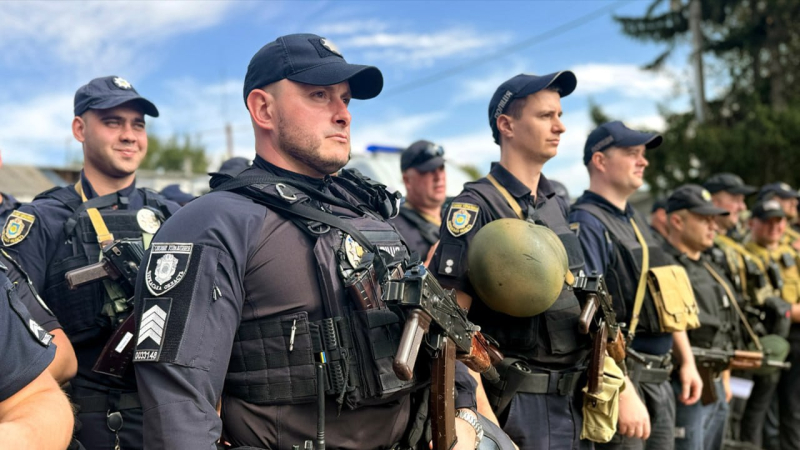
Photo: National Police
As reported by the National Police of Ukraine, public order in Uman is also ensured by servicemen of the National Guard of Ukraine, rescuers of the State Emergency Service, the medical service of the Ministry of Internal Affairs and other services.
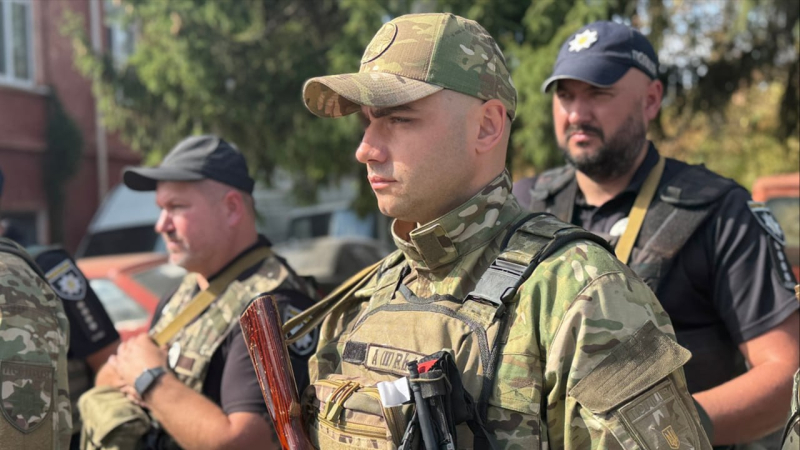
Photo: National Police
At the same time, round-the-clock duty of personnel and equipment of the joint detachment of the State Emergency Service of Ukraine has been organized in Uman.
In particular, divers conducted an inspection and cleared the bottom of the reservoir, which will be used during religious ceremonies, of dangerous objects. Among the objects found were — leftover building materials, branches, glass and more.
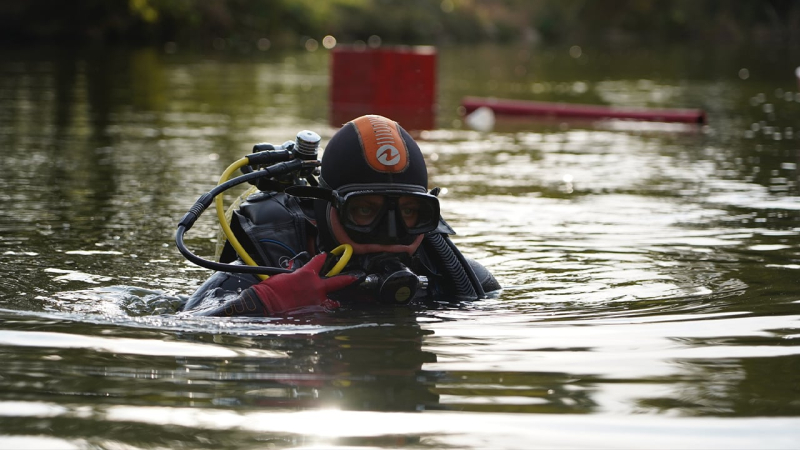
Photo: State Emergency Service
As in previous years, Israeli police will come to Ukraine to help ensure order and safety of Hasidim in Uman.
ICTV Facts have collected symbols and traditions of celebrating Rosh Hashanah in 2024.
Among them are — eating traditional foods, particularly apples with honey, which is a symbol of the sweet New Year.
During Rosh Hashanah, religious ceremonies are held with a ram's horn (shofar), the sound of which reminds us of the divine call to repentance and renewal.

